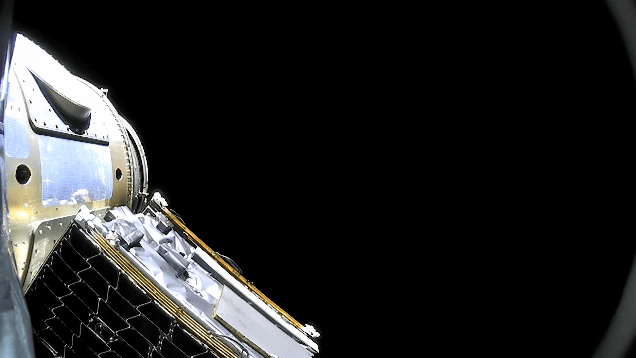A satellite in geostationary orbit ran into some trouble when the device meant to position its solar arrays towards the Sun malfunctioned, preventing it from being fully charged. As a result, the internet satellite will not be able to fulfill its primary goal of providing continuous connectivity to Alaska.
The Arcturus satellite, built by California-based company Astranis, launched in April onboard a SpaceX Falcon Heavy rocket and was successfully deployed in geostationary space (a higher altitude than low Earth orbit). Since its launch, Astranis managed to commission the satellite and began demonstrating end-to-end connectivity to remote sites in Alaska in preparation for active service.
Unfortunately, however, the satellite’s solar array drive assembly experienced an anomaly, which means the satellite won’t be able to sustain full power to the payload, according to a statement by Astranis co-founder John Gedmark. The assembly, which Gedmark points out was provided by an external vendor, rotates the solar arrays to make sure they’re always pointed towards the Sun.
“This is a frustrating situation—the Arcturus spacecraft is in a safe state and fully under our control, the payload and our other Astranis in-house designed components are all working perfectly, and the tanks are fueled for years of on-orbit operation,” Gedmark wrote. “But unless something major changes, the mission of providing internet connectivity in Alaska will be delayed.”
Astranis engineers have recreated the anomaly in a ground-based vacuum chamber in the attempt to hone in on the source of the failure, and the team now knows “exactly how to quickly solve this issue on future spacecraft that are in production as we speak,” Gedmark explained.
In the meantime, Astranis will move forward with a backup plan in the form of a multipurpose satellite named UtilitySat, which can act as a spare until the Arcturus satellite is replaced. UtilitySat has multiple frequency bands and can operate anywhere in the world, although it may not function with the same capability as Arcturus. UtilitySat will launch at the end of this year to provide a temporary solution for customers. Arcturus, on the other hand, will be “repurposed for secondary missions like on-orbit technology demonstrations,” Gedmark stated.
Instead of adding to the number of internet satellites in low Earth orbit, Astranis set out to create the first MicroGEO constellation of small satellites that provide connectivity to specific geographic areas from geostationary orbit, and to do so at a low price. Satellites in geostationary orbit circle Earth above the equator from west to east, following along the planet’s rotation.
“We knew that we would learn a lot with this first mission,” Gedmark wrote. “Issues with a first-of-its-kind aerospace vehicle are not the exception, they are the norm.”
For more spaceflight in your life, follow us on Twitter and bookmark Gizmodo’s dedicated Spaceflight page.
